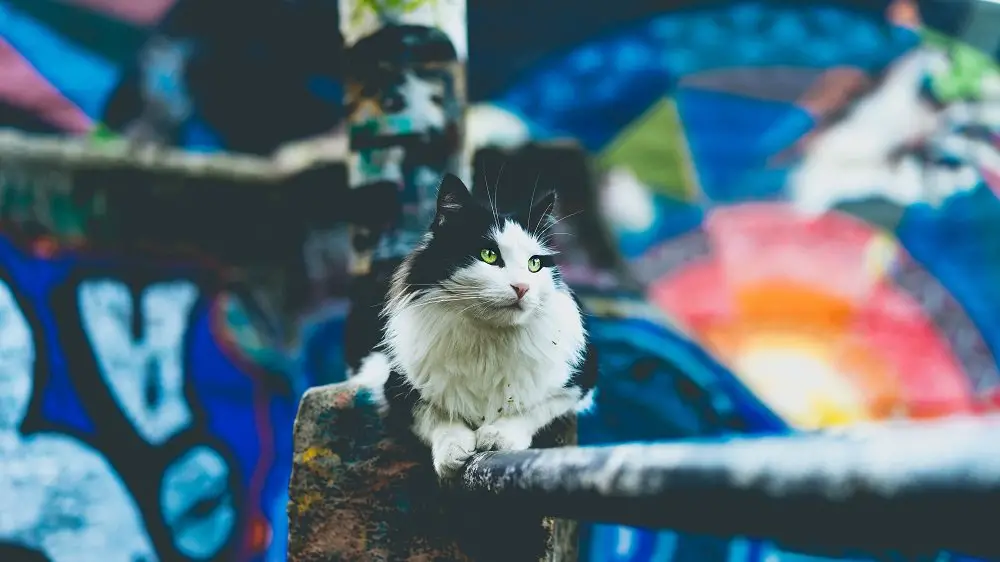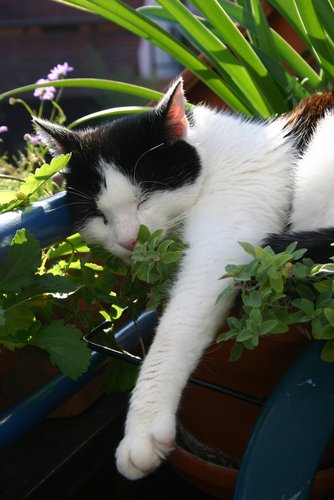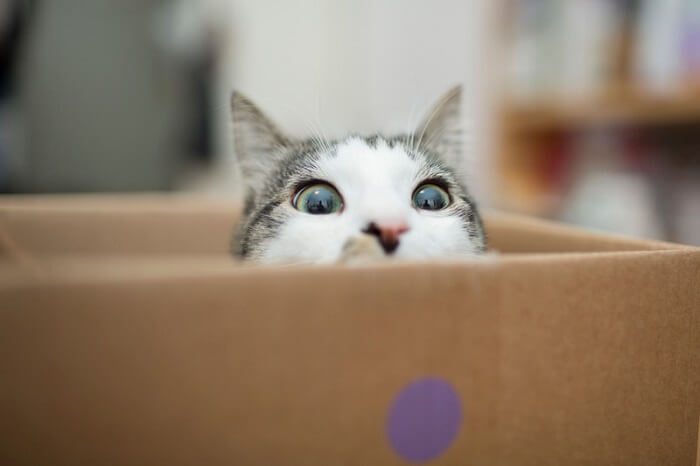
If you’re the type of person who likes to make sure that every stray cat you come across is well fed and watered and you think nothing of allowing a stray cat to come into your home then at some point you have probably had a stray cat come into your home that decides it is not going to leave.
While some cats are fiercely loyal to their owners most cats are more territorial in nature so choose to stay in a place because it feels familiar, safe and comfortable to them.
When a cats situation changes for example you get a dog, another cat or even have a baby then your cat can feel uncomfortable and unsafe in your home. A cat may go missing because it chooses to seek out other places which feel safer such as someone else’s home.
Contents
Find Out if The Cat is a Stray, Someone’s Pet or Feral
When a stray cat comes into your life and decides to stay it is important to find out if the cat is a genuine stray or feral cat or if, as is often the case, it belongs to a neighbour and has simply decided that it wants to find somewhere a bit quieter and more comfortable to live such as your home!
A cat may also seek shelter in your home if it is sick or injured, if you do notice any signs of this then you should immediately call the RSPCA.
Signs Of A Feral Cat
If the cat avoids looking at you, doesn’t meow at you and hides every chance it get then that indicates that the cat has never been someones pet as it is not used to humans so it is likely to be feral.
Signs Of A Stray Cat
If the cat makes eye contact with you and doesn’t immediately react aggressively towards you then this indicates that the cat is used to humans and is likely to be someones pet.
Take The Cat To The Vet To Check For A Microchip
In order to find out where the cat is from it is a good idea to take it to the vet. Doing this may be difficult, particularly if the cat if feral and not used to humans. Leaving some treats inside a crate, cat carrier or cat backpack should allow you to catch it.
Once the cat has been safely stored in a carrier then you should take it to your nearest veterinary centre to have it’s microchip scanned. If the cat has a microchip then you will be able to find out who the cat belongs to as well as their contact details.
Your vet will probably may not be able to give you the contact details for the cats owner however they will be able to contact them and let and pass on your details so that they can get in touch and come and get their cat.
What To Do If The Cat Is Feral
In this case your options are either to attempt to domesticate the cat and keep it as a pet or to take it to your local feline rescue centre.

Get The Cat Neutered
If you decide to keep the cat as your own pet then you should first take the cat to a vet to get it neutered. If you choose to take the cat to a rescue centre they will get it neutered as part of their standard procedure.
Feral cats which are not neutered will breed and have more kittens which will place further burdens on cat rescue centres which are already struggling to cope with the volume of homeless cats up and down the country (and across the globe), so getting the cat neutered is important to stop the growth of the feral cat population.
Looking After A Feral Cat That Has Adopted You
Deciding to keep a feral cat is exciting but it can be challenging as they are not used to interacting with humans and are often very wary of us and may act aggressively. Earning the trust of a feral cat can take a considerable amount of time and will demand a lot of patience.
Here are a few things you can do to help a cat get used to you and settle into your home more quickly:
- Isolate your cat in your home by giving it one room to stay in and familiarise itself with.
- Keep any other household pets away from your new cat as this will cause a lot of stress. Don’t let other pets into the room where the cat is staying.
- Make a habit of regularly sitting in the room with the cat, don’t force any interaction with them just sit there quietly and allow them to get used to your smell and your presence.
- Get them a nice cardboard box that they can sit in and position it in a place which allows them to see the whole room, this will help them feel more secure while allowing them to continue to get used to their new surroundings.
- Of course don’t forget to provide good quality cat food, water and a litter box. You can also try introducing them to cat toys and scratching posts.
- Keep their feeding times and your visiting times to a regular schedule throughout the day to minimise stress.
It makes take weeks or even months before your cat trusts you fully but over time they should eventually be able to relax in your presence and will hopefully make a great pet.
As an Amazon Associate I may earn a small fee from qualifying purchases at no extra cost to you. This helps us run the site, so thanks for your support!






My cat has no fleas, but is pulling his fur out! What can I do to help him, is he stressed?
Hi Gail,
Often psychological disturbances which have caused your cat a lot of strees can be the primary cause of a cat pulling it’s hair out. The best way to help your cat is to identify and remove the cause of stress from their life. This article has some good information on what to do.